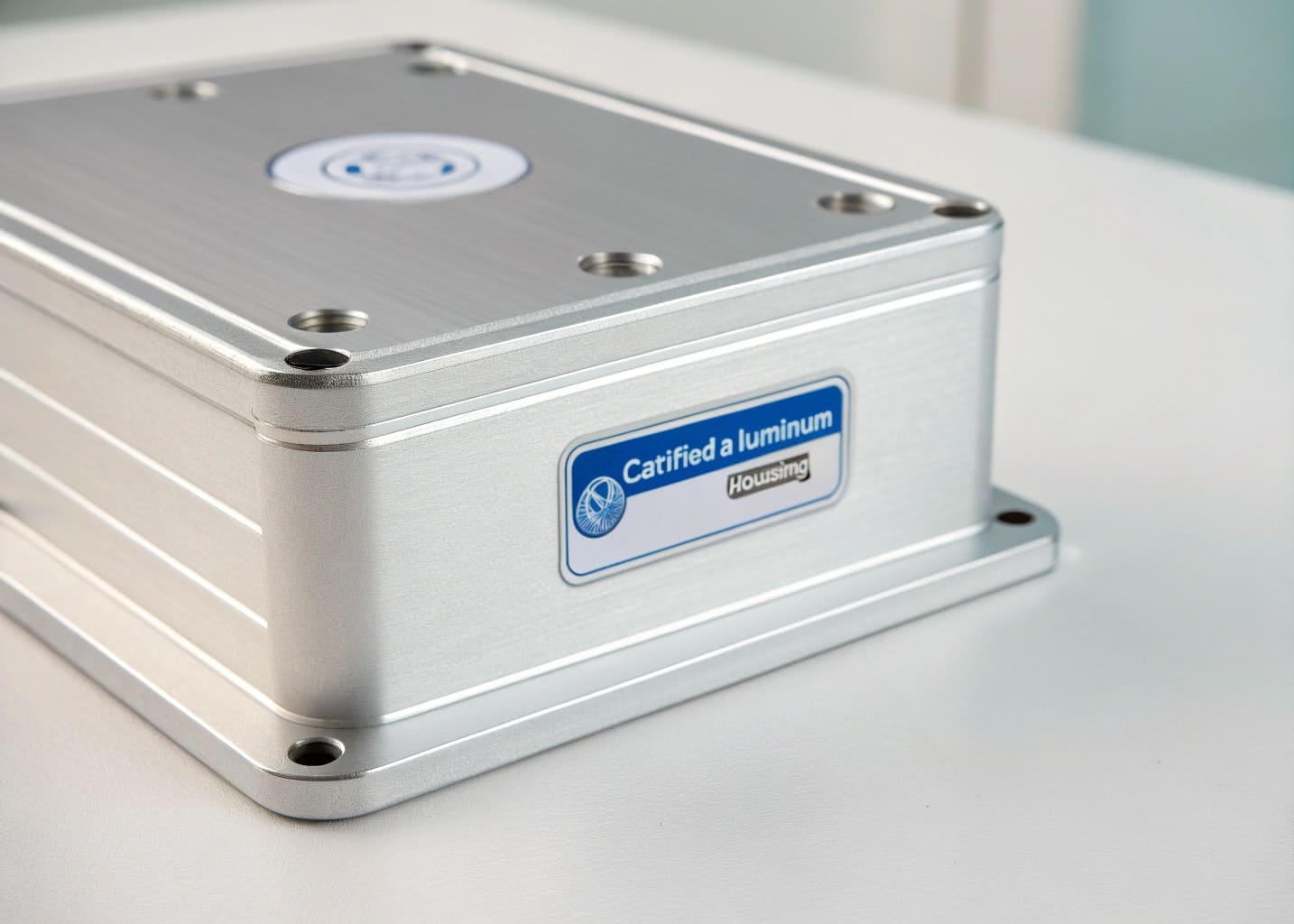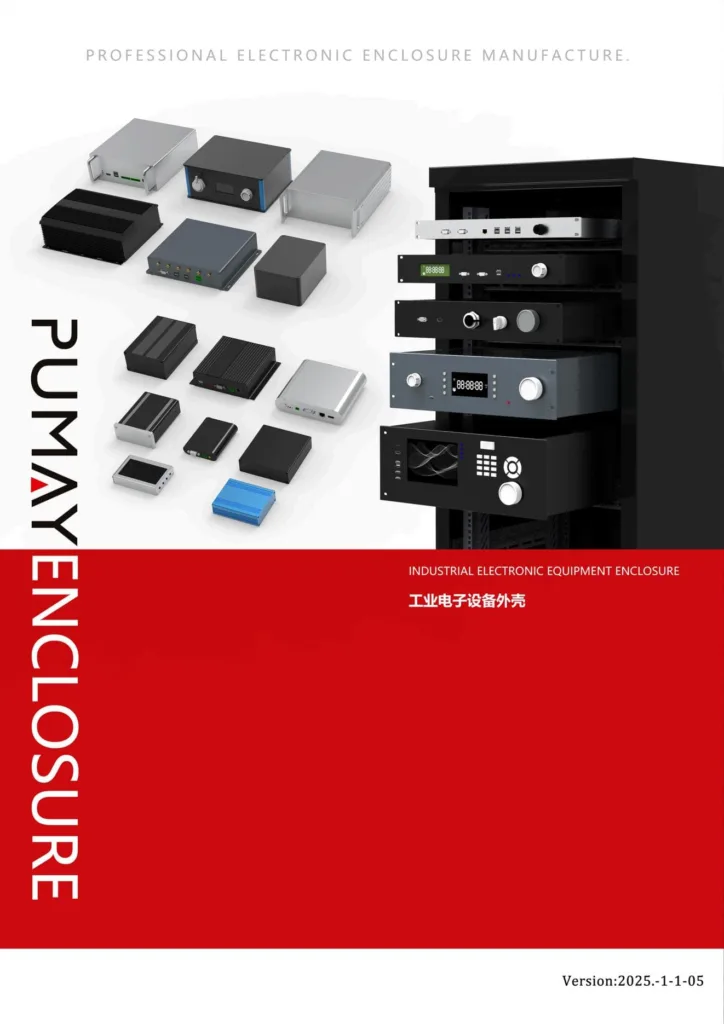Aircraft electronics fail and flights get delayed when fragile housings crack or overheat. I solve this pain by pairing rugged aluminum enclosures[^1] with mission-critical avionics.
Aerospace programs use aluminum enclosures to cut weight, shed heat, block EMI, pass DO-160 testing[^2], and enable rapid design cycles[^3]—letting engineers fly safer, smarter, and sooner. :contentReference[oaicite:0]{index=0}
 "Aerospace Aluminum Enclosure"
"Aerospace Aluminum Enclosure"
My goal today is to show you, step by step, why aluminum remains the go-to shell for everything from flight-control boxes to cubesats[^4]—and how you can spec it with confidence.
Why does aerospace rely on lightweight aluminum enclosures?
Extra grams turn into extra fuel burn and higher ticket prices. That strains airline profit and climate targets.
Aluminum enclosures weigh 30-60 % less than equivalent steel boxes yet keep the same strength, allowing airlines to save fuel and increase payload without redesigning the avionics inside.
 "Lightweight Avionics Housing")
"Lightweight Avionics Housing")
Weight Savings, Strength, and Cost
Lightness drives every line on an aircraft bill of materials. When I helped refit a regional jet’s Wi-Fi router, switching from painted steel to anodized 6061-T6 saved 420 g per shipset. That small cut, multiplied across the fleet, meant thousands of liters of kerosene saved yearly. Aluminum’s strength-to-density ratio beats steel, and—unlike composites—it stays machinable for field mods. Airlines also like its corrosion resistance[^5]; unsealed steel rusts in humid cargo bays, while properly anodized aluminum[^6] resists salt fog for decades. The metal’s recyclability closes the loop, supporting sustainability goals[^7] without costly material reclamation.
| Property | Aluminum (6061-T6) | Stainless 304 | CFRP Panel |
|---|---|---|---|
| Density g/cm³ | 2.7 | 8.0 | 1.6 |
| Machinable on-site | Yes | Yes | No |
| EMI Shielding | Good | Excellent | Poor |
| FAA Repair Station Familiarity[^8] | High | High | Low |
How do aluminum enclosures manage heat in avionics?
Overheated flight computers shut down mid-air, forcing expensive diversions.
Aluminum’s high thermal conductivity[^9]—up to 235 W/m·K—pulls heat away from CPUs, FPGAs, and power modules, keeping avionics within safe limits without bulky fans. :contentReference[oaicite:1]{index=1}
 "Thermal Avionics Enclosure"
"Thermal Avionics Enclosure"
Passive Cooling That Flies
Modern jets cram gigabit switches and AI co-processors near the cockpit. Fans add noise, weight, and maintenance. I once milled deep fins into a 5 mm-thick aluminum lid, then hard-anodized it black to boost emissivity. Ground tests showed a 12 °C drop versus a flat plate. The customer cleared DO-160 Section 7 for temperature extremes on the first try, saving three weeks of re-tests. Aluminum can also integrate heat pipes[^10] by pressing copper tubes into CNC-cut channels. This hybrid spreads hot spots to the fins or even to the airframe skin, turning the fuselage into a giant heat sink. With additive manufacturing[^11], lattice cores further slash wall thickness while guiding airflow inside the box—perfect for cubesats[^4] that bake in space.
Why is EMI shielding[^12] vital in aircraft systems?
Unwanted radio noise scrambles navigation, breaks satellite links, and voids air-worthiness certificates.
Aluminum enclosures form a Faraday cage that blocks RF energy, and with conductive gaskets they routinely meet RTCA DO-160G and MIL-STD-461 EMC limits. :contentReference[oaicite:2]{index=2}
 "EMI-Shielded Flight Computer"
"EMI-Shielded Flight Computer"
Keeping Signals Clean at 35 000 ft
During a cockpit upgrade, a tablet charger emitted spikes at 120 MHz that bled into VHF radios. We swapped its plastic shell for a die-cast aluminum can with a nickel-plated beryllium-copper gasket. The interference vanished, and the airline avoided an expensive supplemental type certificate delay. Aluminum’s conductivity (~3.5 ×10⁷ S/m) reflects electric fields, while its permeability close to unity keeps weight down compared with mu-metal. When extra suppression is needed, chromate conversion layers stay conductive after paint, preserving the shielding path across seams. Engineers also add threaded boss inserts to guarantee metal-to-metal contact after thousands of pressurization cycles. The result: stable comms, clear radar, and happy regulators.
| Shielding Layer | Function | Typical Weight Penalty |
|---|---|---|
| Bare Aluminum Wall | Base Faraday cage | None |
| Chromate Conversion | Corrosion + continuity | +1 µm |
| Conductive Gasket | Seal gaps, absorb RF | +2 g per 100 mm |
How do aluminum enclosures meet strict aerospace standards?
Failing qualification means grounded fleets and lost revenue.
Aluminum enclosures withstand vibration, fire, and fluid exposure tests in DO-160, and the material’s well-documented pedigree streamlines AS9100 audits and FAA or EASA approvals.
 Certified Aluminum Housing"
Certified Aluminum Housing"
Built-in Compliance
Regulators trust what they know. Aluminum alloys such as 2024 and 6061 appear in decades of material databases[^13], letting me reference MMPDS tables rather than run costly coupon programs. During a satellite battery box project, using bead-blasted 5052 sheet let us pass DO-160 Section 24 (flammability) without adding intumescent coatings. For fluids, we anodized per MIL-A-8625 Type II, which resisted Skydrol and de-icing glycol in lab soaks. On vibration rigs, rib stiffeners cut panel deflection, keeping resonance above 200 Hz—well outside typical rotor frequencies. Documentation was straightforward: material certs, process specs, and first-article inspection[^14] reports fit neatly into our AS9102 package, pleasing both the prime contractor and the FAA DER.
| DO-160 Section | Relevant Test for Enclosure | Aluminum Advantage |
|---|---|---|
| 7 Temp & Alt | −55 °C to +85 °C | No brittle phase shift |
| 11 Vibration | Random 0.02 g²/Hz | High fatigue limit |
| 26 Flammability | 12 sec vertical burn | Pass with anodize |
How does rapid customization speed up aerospace innovation?
Slow tooling drags out flight-test schedules and burns funding.
CNC-machined aluminum enclosures pivot fast: design-to-flight hardware in weeks, not months, with no hard tooling and easy late-stage edits.
 "Rapid Prototyped Avionics Box"
"Rapid Prototyped Avionics Box"
Prototype Today, Fly Tomorrow
Start-ups racing to launch small-sats cannot wait 16 weeks for cast molds. I often cut prototype housings from 6082 billets in three days, anodize on day four, and ship on day five. Each revision costs only programming time, so engineers iterate freely. Threaded inserts, cable pass-throughs, and mounting lugs appear exactly where the test crew requests—no weldments needed. When the design freezes, the same CAM file scales into low-volume flight production, ensuring form-fit identical parts. This digital workflow ties neatly into Model-Based Definition; PMI call-outs flow straight to the five-axis mill, eliminating 2D drawings and reducing mis-builds. Additive and subtractive hybrids now remove mass from non-critical ribs while printing antenna bosses in one go. Fast customization means faster risk-retirement, which investors love.
| Custom Step | Traditional Lead | CNC/AM Lead |
|---|---|---|
| Tool Design | 2–3 weeks | None |
| Tool Build | 8–12 weeks | None |
| First Parts | 14 weeks | <1 week |
Conclusion
Aluminum enclosures give aerospace teams the light weight, thermal control, EMI shielding[^12], certification path, and design agility they need to keep aircraft safe and innovation airborne.
---
[^1]: Explore how aluminum enclosures enhance safety and efficiency in aerospace applications.
[^2]: Find out how DO-160 testing ensures the reliability of aerospace components.
[^3]: Discover how rapid design cycles can accelerate the development of new aerospace technologies.
[^4]: Discover the growing role of cubesats in modern aerospace missions and research.
[^5]: Explore the advantages of aluminum's corrosion resistance in harsh environments.
[^6]: Explore the advantages of anodized aluminum for durability and performance.
[^7]: Explore how aluminum contributes to sustainability efforts in the aerospace industry.
[^8]: Learn why familiarity with FAA regulations is crucial for aerospace manufacturers.
[^9]: Discover how thermal conductivity affects the performance and reliability of avionics systems.
[^10]: Learn about the innovative use of heat pipes for efficient thermal management in avionics.
[^11]: Discover how additive manufacturing is revolutionizing the production of aerospace components.
[^12]: Understand the necessity of EMI shielding for maintaining communication and navigation integrity.
[^13]: Explore how material databases streamline the design and certification process in aerospace.
[^14]: Learn about the significance of first-article inspection in ensuring quality and compliance.




